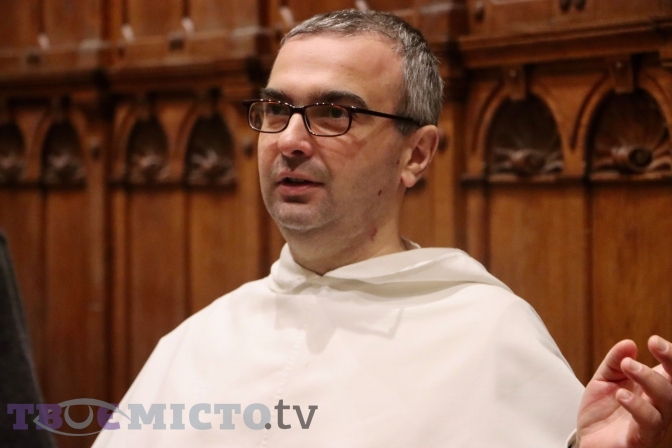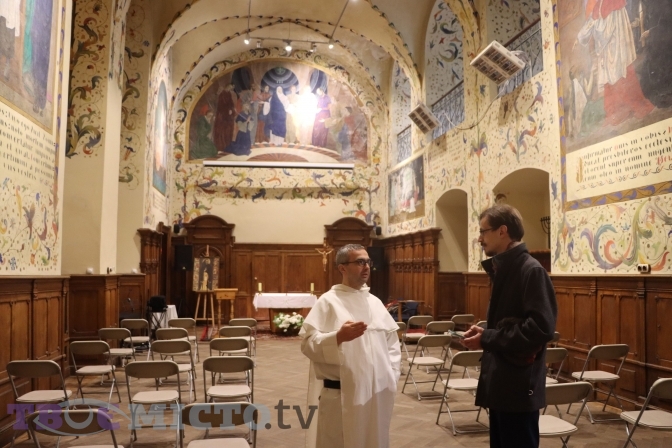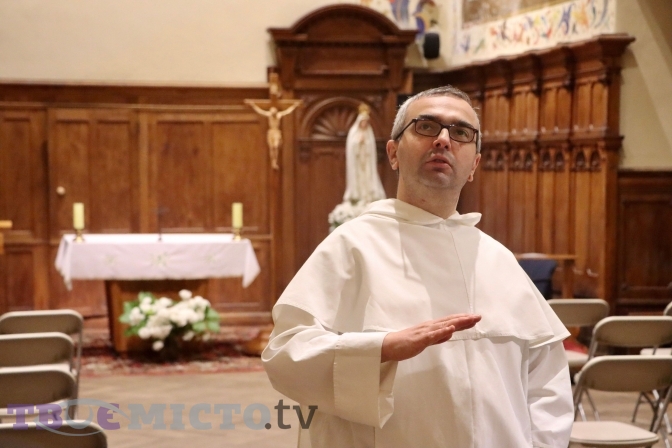
What kind of holiday it is
by Roman Tyshchenko (Lamansky)
Halloween has acquired a universal, secular reputation, but its roots, as is obvious by the origins of its name–»All Hallows Eve»–are religious. One scholar researched that the tradition of celebration originated with Protestants who stopped worshiping saints, but the need for their honouring remained. It is difficult to totally agree with this explanation, but in the secular celebration, a mockery for the typical Catholic tradition of veneration of saints can be noticed in the costumes intended to be scary or horrific.
«All Hallows» is the Old English etymology of All Saints. All Hallows Even’ is the day before one of the major Christian holidays, All Saints’ Day, abbreviated – Hallowe’en. It is a march or procession of all the saints. The following day, 2 November, is the feast of All Souls--ever since a decree by Pope Gregory IV in the 11th century, to honor all the faithful departed whether not they have been declared saints. And then the rest of November remains a time to remember and pray for the dead.
In secular realities, it became an element of dread and spread through Hollywood culture, movies, and horror films. Attraction to something distorted and inhuman is totally opposite of the face of man as the saint’s face. It is something demonic to divert people’s attention from everything beautiful, from virtues and beauty, to the distorted.

What is the culture of celebration of the dead?
Father Dr. Ihor Gnius: In [Ukrainian] our culture and our Catholic civilization, the place for masquerade is Christmas time. Christians in Ukraine have a tradition of caroling, vertep (a Ukrainian Christmas spectacle), which is a whole theatrical action.
Children should be asked about what they are doing on Halloween, and its nonsense must be explained to them. It can be presented as something inappropriate, something that does not express the essence of the celebration. If you walk around disguised and visit the apartments, what are you to expect from the hosts: getting a blessing from them, receiving candy, or scaring someone?
What is accepted in the tradition of the Western Church
Father Dr. Ihor Gnius: On November 1, the Western Church commemorates All Saints. I think that dressing up for this holiday could have been common in the Middle Ages in the Anglo-Saxon countries. Even in today’s clothes of secular revelers you can see the attributes of martyrs, for example – bloody robes.
November 2 is the remembrance of all the faithful who died. And from a Christian point of view, it would be worth visiting the cemetery, cleaning the grave and bringing fresh flowers and candles. It is an expression of faith in the Resurrection. Because the flower means the continuation of life, and the lamp with a candle shows faith in eternal life.
In liturgical practice, a Requiem is served, which means Mass for the dead. This is the only time of the year, except Good Friday, when the liturgical vestments are black. The words «hallelujah», which are a manifestation of the joy of the living, are never sung during this Service. Also earlier in history, the majestic anthem Dies Irae («Day of Wrath») was proclaimed on this day. It’s about the Second Coming of Jesus Christ and the Last Judgment.
After the Second Vatican Council, this part of the Mass was abolished due to its scary content. However, if we analyze the Latin text, we can understand that this hymn is about the realism of the death of each person and the hope of eternal life.

What can you tell us about the art of death?
Father Dr. Ihor Gnius: In the Middle Ages, there was a tradition of Ars moriendi – the art of dying. A person throughout life must prepare for this moment. There is an order of Cartesian monks who lead a solitary life and constantly repeat the phrase Memento mori (Latin «Remember death»). Nevertheless, it is not about celebrating and honouring death itself, but about realism. Understand that human life on Earth is finite and is similar to the life of a pilgrim.
All these actions are not for the dead, but for the living. It is a catechesis for us showing that we mustn’t spend all the time partying, that the life of every person on Earth will end, and there are also patience and illnesses. Understanding the art of death is especially relevant today in the pandemic time. One must be able to resurrect to God, after dying on Earth. Therefore, instead of Hollywood, the art of death would be worth learning on Halloween.
The following spoke: Roman Tyshchenko (Lamansky)
Translated by Vitalii Holich
Fr. Gnius is the record of the Rosen Chapel, which has famous murals you can read about here: «Heaven on Earth: Where to See ‘Secret’ Frescros in Lviv.» The chapel is run by the Dominicans of the western, Latin rite of the Roman Catholic Church. The majority denomination of Lviv is Greek Catholicism, which is in union with the Roman church but whose liturgy, calendar, and governance are eastern in style.
You can read a Ukrainian language version of this story here.
To receive our weekly email digest of stories, please follow us on Substack.
Lviv Now is an English-language website for Lviv, produced by Tvoe Misto («Your City») media-hub, which also hosts regular problem-solving public forums to benefit the city and its people.












